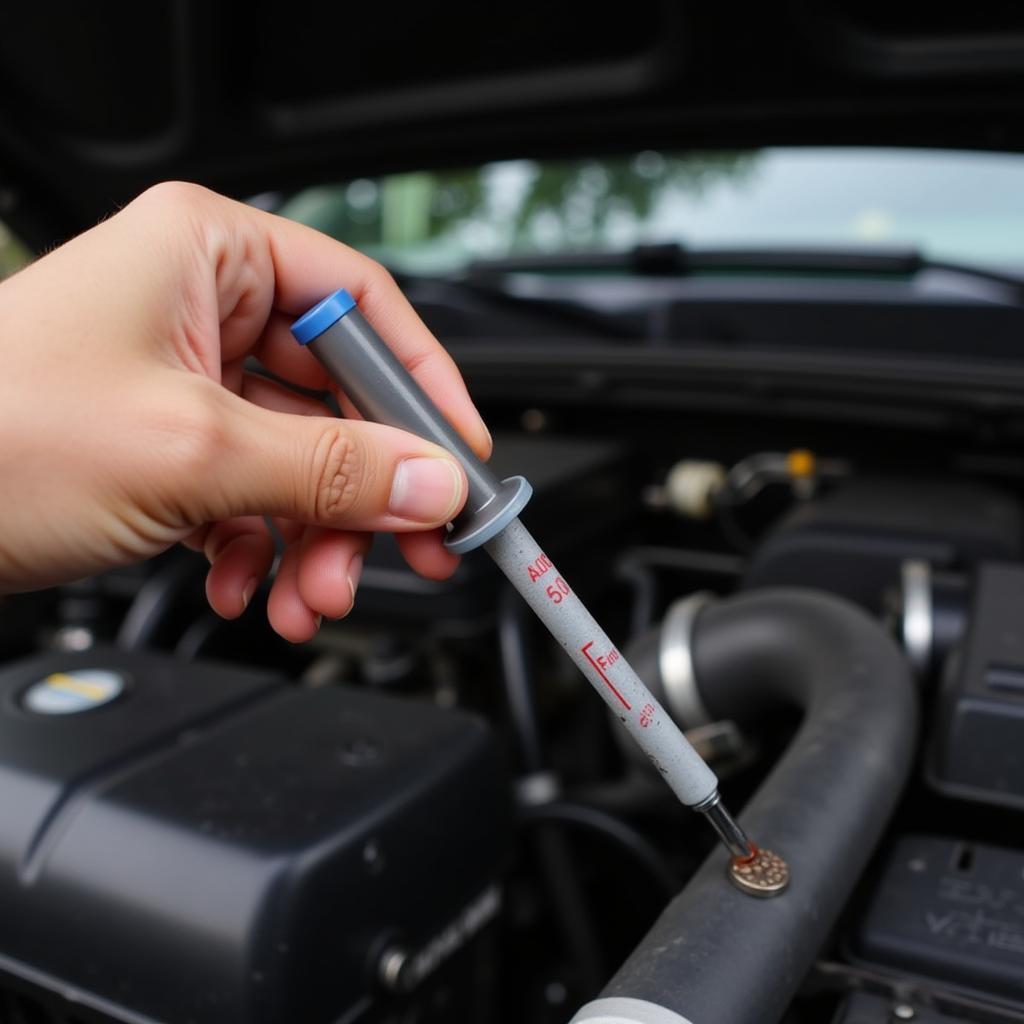All-wheel drive (AWD) systems have become increasingly popular in recent years, offering improved traction and handling in various driving conditions. However, like any complex automotive system, AWD vehicles can experience problems that require attention. This article will delve into some common issues encountered with AWD cars, explain the underlying causes, and provide practical solutions for both car owners and automotive professionals.
Understanding AWD Systems
Before exploring specific problems, it’s essential to grasp the basics of how AWD systems operate. Typically, AWD systems utilize a center differential to distribute power between the front and rear axles. This distribution can be either permanent or on-demand, depending on the vehicle’s design. When encountering slippery surfaces, the system automatically engages the rear wheels to enhance traction and stability.
Common Problems with AWD Cars
1. AWD System Malfunctions
Signs:
- Loss of traction in slippery conditions
- Uneven power distribution between axles
- Unusual noises or vibrations from the drivetrain
- Illuminated AWD system warning light on the dashboard
Causes:
- Failed center differential: The center differential is crucial for distributing power effectively. A malfunctioning differential can lead to power loss or uneven distribution between the axles.
- Defective transfer case: The transfer case connects the transmission to the drivetrain. A faulty transfer case can prevent power from reaching the rear wheels.
- Damaged drive shafts: The drive shafts transmit power from the transmission to the wheels. Damaged or worn-out drive shafts can cause power loss and noise.
- Faulty sensors: AWD systems rely on sensors to monitor various parameters and adjust power distribution accordingly. Faulty sensors can lead to incorrect system operation.
Solutions:
- Diagnosis: Start with a thorough inspection of the AWD system, including the center differential, transfer case, drive shafts, and sensors.
- Replacement: If necessary, replace faulty components with genuine parts to ensure proper operation.
- Maintenance: Regularly check fluid levels in the transfer case and differential to prevent premature wear and tear.
2. AWD System Engagement Issues
Signs:
- AWD system failing to engage in slippery conditions
- Delayed engagement or disengagement
- Unusual noises when engaging or disengaging the system
Causes:
- Faulty solenoid valves: Solenoid valves control the flow of hydraulic fluid to the AWD system, enabling engagement. Defective solenoids can prevent proper system operation.
- Low hydraulic fluid levels: AWD systems rely on hydraulic pressure to engage and disengage. Low fluid levels can cause engagement issues.
- Stuck or faulty actuator: The actuator is responsible for physically engaging the rear wheels. A stuck or malfunctioning actuator can prevent the system from engaging.
Solutions:
- Diagnosis: Check for faulty solenoid valves, low hydraulic fluid levels, and a stuck or malfunctioning actuator.
- Replacement: Replace any defective components.
- Maintenance: Regularly check hydraulic fluid levels and ensure proper operation of the actuator and solenoids.
3. Excessive Wear and Tear
Signs:
- Premature tire wear, especially on rear tires
- Unusual noises from the drivetrain, particularly when accelerating or braking
- Increased fuel consumption
Causes:
- Uneven tire pressure: Maintaining proper tire pressure is crucial, particularly for AWD vehicles. Incorrect tire pressure can lead to uneven wear and affect the system’s efficiency.
- Misaligned wheels: Misaligned wheels can cause premature wear and tear on tires and drivetrain components.
- Overloading: Exceeding the vehicle’s weight capacity can put additional strain on the AWD system, accelerating wear and tear.
Solutions:
- Maintenance: Regularly check and adjust tire pressure to maintain optimal performance.
- Wheel alignment: Have the wheels aligned by a qualified technician to ensure proper tracking.
- Proper loading: Avoid overloading the vehicle to prevent undue stress on the drivetrain.
Professional Expertise is Key
“AWD systems can be complex, and troubleshooting them requires a deep understanding of the technology,” says Michael Anderson, a veteran automotive technician with over 20 years of experience. “It’s crucial to rely on qualified professionals for diagnosing and repairing any issues. Ignoring problems can lead to further damage and potentially compromise the safety of the vehicle.”
Conclusion
AWD systems enhance vehicle capabilities but can also present unique challenges. By understanding common problems, their causes, and potential solutions, car owners and automotive professionals can ensure optimal performance and longevity of their AWD vehicles. If you encounter any issues with your AWD system, don’t hesitate to seek professional assistance to avoid costly repairs and maintain your vehicle’s safety and reliability.
Remember: Regular maintenance is key to preventing problems and ensuring long-lasting performance.
For further assistance or to schedule an appointment, please contact AutoTipPro:
- Phone: +1 (641) 206-8880
- Office: 500 N St Mary’s St, San Antonio, TX 78205, United States
FAQ
Q: How often should I service my AWD system?
A: It’s recommended to have your AWD system serviced every 30,000 miles or as per the manufacturer’s recommendations.
Q: Can I use regular gasoline in an AWD car?
A: Yes, most AWD vehicles can use regular gasoline unless specified otherwise by the manufacturer.
Q: Is it okay to drive an AWD car with a flat tire?
A: It’s not recommended to drive with a flat tire in an AWD car. It can damage the drivetrain and compromise safety.
Q: What are the advantages of AWD?
A: AWD provides improved traction and handling in slippery conditions, enhances acceleration, and offers greater stability and control.
Q: Can I convert my 2WD car to AWD?
A: Converting a 2WD car to AWD is generally a complex and costly process. It’s best to consult with a qualified automotive technician to determine feasibility.







Leave a Reply